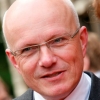The future of transport
ASHGABAT, TURKMENISTAN – There are 1.25 million lives lost in road accidents annually—90% of these in low -income countries. Air pollution leads to around 6.5 million deaths each year. And almost 25% of energy-related greenhouse gas emissions come from transport systems. To ensure a sustainable future for this planet, the transport sector must undergo a massive transformation.
Without sustainable transport, we won’t be able to make progress on the Sustainable Development Goals (SDGs) and climate change. This was the topic of discussion at the first-ever United Nations Conference on Sustainable Transport in Ashgabat, Turkmenistan, which took place November 26-27, 2016. The event brought together all transport stakeholders—public and private—to discuss how to move from global commitments on transport to concrete action.
- Tags:
- Transport










 Connecting to Compete 2016: The Logistics Performance Index
Connecting to Compete 2016: The Logistics Performance Index




 Instituting reforms is challenging. The changing environment of politics, the conflicting interests of multiple stakeholders, and contrary public opinions can all become obstacles to the success of a reform agenda.
Instituting reforms is challenging. The changing environment of politics, the conflicting interests of multiple stakeholders, and contrary public opinions can all become obstacles to the success of a reform agenda.


